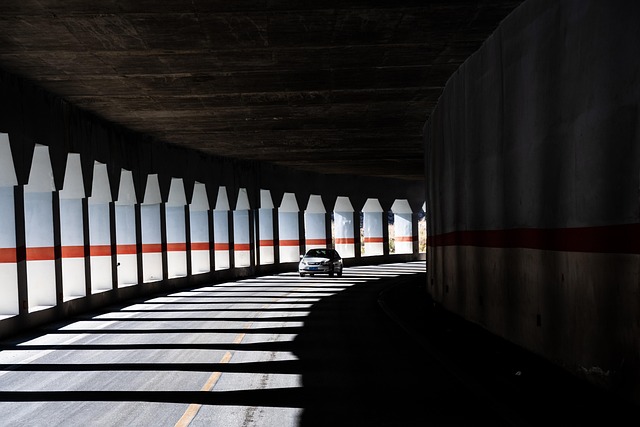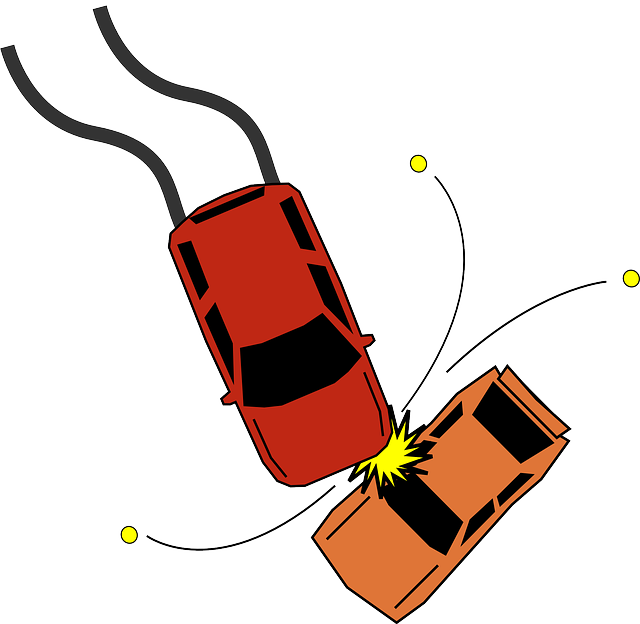City Collision Specialists: Trusted Repair Experts for Modern Vehicles
City collision specialists are automotive experts who excel in repairing vehicles damaged in urban s…….
In the heart of modern cities, where concrete jungles rise and traffic congestion is a daily reality, a specialized field emerges to tackle one of urban planning’s most complex challenges: city collision management. This comprehensive article delves into the world of city collision specialists, exploring their role, impact, and significance in creating safer, more efficient urban spaces. By examining various aspects, from technological solutions to policy frameworks, we aim to provide an insightful guide to understanding and optimizing the intricate dance between cities, their inhabitants, and the potential for collisions.
Definition: City collision specialists, or urban collision avoidance experts, are a multidisciplinary group of professionals dedicated to minimizing conflicts and enhancing safety within urban environments. Their primary focus is to analyze, design, and implement strategies that prevent or mitigate potential crashes, injuries, and damage resulting from interactions between vehicles, pedestrians, cyclists, and infrastructure in city settings.
Core Components:
Data Collection and Analysis: Specialists gather extensive data on traffic patterns, accident histories, demographic information, and environmental factors specific to the urban area. Advanced analytics and machine learning techniques are employed to identify collision hotspots, predict risk behaviors, and understand user interactions with the built environment.
Urban Design and Planning: Utilizing insights from data analysis, these experts collaborate with architects, engineers, and urban planners to design streetscapes, intersections, and public spaces that promote safer mobility options. This involves strategic placement of traffic signals, speed bumps, pedestrian crossings, cycling lanes, and other infrastructure elements.
Collision Avoidance Technologies: The implementation of innovative technologies is a cornerstone of their work. These include advanced driver-assistance systems (ADAS), such as collision warning systems, automatic emergency braking, and lane-keeping assist, which aim to prevent accidents before they occur. Additionally, specialists explore the potential of autonomous vehicles and smart traffic management systems to optimize urban mobility.
Historical Context:
The concept of city collision specialists has evolved over time in response to growing urbanization and increasing transportation-related challenges. Historically, urban planning focused more on expanding road networks and accommodating vehicular traffic, often at the expense of pedestrians and cyclists. As cities became more congested and accident rates soared, a paradigm shift occurred. Researchers, urban planners, and policymakers began recognizing the need for a more holistic approach to urban mobility, leading to the emergence of collision avoidance specialists.
The influence of city collision specialists is evident worldwide, with each region adopting unique strategies to address its specific urban challenges.
North America: Cities like New York and Los Angeles have been at the forefront of implementing advanced traffic management systems, including real-time data analytics for signal timing optimization and adaptive traffic control. The use of smart sensors and connected vehicles is also on the rise, enabling more efficient collision avoidance mechanisms.
Europe: European urban centers, such as Amsterdam and Berlin, have gained recognition for their cycling-friendly infrastructure and successful integration of active transportation modes. These cities prioritize pedestrian and cyclist safety through well-designed intersections, dedicated lanes, and comprehensive education campaigns.
Asia: Rapidly growing metropolises in Asia, including Singapore and Tokyo, have invested heavily in intelligent transport systems (ITS). These cities employ advanced technologies like vehicle-to-infrastructure (V2I) communication to enable real-time collision avoidance and efficient traffic flow management.
Emerging Trends:
Smart Cities and IoT Integration: The Internet of Things (IoT) is transforming urban mobility by connecting various transport systems, sensors, and devices. This enables more dynamic and responsive collision avoidance strategies, allowing cities to adapt to changing conditions in real time.
Autonomous Vehicles: While still in the early stages, the adoption of autonomous vehicles has significant implications for city collision specialists. These self-driving cars promise to revolutionize urban transportation, potentially reducing accidents caused by human error. However, specialists must also consider new challenges, such as programming safe interactions between AVs and conventional vehicles.
Data-Driven Planning: The use of big data analytics continues to grow, allowing specialists to make more informed decisions. Predictive modeling can identify emerging trends, assess the effectiveness of interventions, and guide future urban design choices.
The economic aspects of city collision specialist projects are multifaceted, involving various stakeholders and considerations.
Market Dynamics: The demand for specialized services is driven by increasing urbanization, growing traffic congestion, and a rise in road accident-related costs. Governments and municipal authorities recognize the need for proactive collision avoidance measures to reduce these expenses and improve public safety.
Investment Patterns: Significant investments are made in infrastructure upgrades, advanced traffic signal systems, smart sensors, and technology implementations. Private sector involvement through Public-Private Partnerships (PPPs) is common, leveraging expertise and resources for more efficient project delivery.
Economic Impact: Well-designed collision avoidance strategies can lead to substantial economic benefits. Reduced accidents and congestion can decrease insurance claims, emergency response times, and road maintenance costs. Moreover, improved urban mobility may attract new businesses, enhance tourism, and contribute to overall economic growth.
Technological innovations play a pivotal role in the arsenal of city collision specialists, continuously shaping the future of urban transportation.
Advanced Driver-Assistance Systems (ADAS): These systems have become ubiquitous in modern vehicles, offering features like blind-spot monitoring, adaptive cruise control, and lane-keeping assist. As these technologies mature, they will further reduce human error, a leading cause of collisions.
Vehicle-to-Everything (V2X) Communication: V2X technology enables direct communication between vehicles, infrastructure, and pedestrians using dedicated short-range communications (DSRC) or cellular networks. This real-time data exchange allows for faster collision avoidance decisions and improves overall traffic safety.
Smart Traffic Management Systems: AI-powered systems analyze data from various sources, including cameras, sensors, and vehicles, to optimize traffic flow. These systems can dynamically adjust signal timings, detect anomalies, and provide real-time feedback to users, enhancing urban mobility efficiency.
Pedestrian and Cyclist Safety Technologies: Innovations like smart crosswalk signals, collision warning systems for cyclists, and wearable technology to alert pedestrians of approaching vehicles are gaining traction. These technologies aim to protect vulnerable road users by providing early warnings and improving their visibility.
The development and implementation of effective collision avoidance strategies rely heavily on supportive policies and regulations.
Regulatory Frameworks: Governments play a crucial role in establishing guidelines and standards for urban mobility, vehicle safety, and infrastructure design. These regulations ensure that city collision specialists’ work aligns with broader transportation policies and promotes consistency across regions.
Incentives and Subsidies: Many countries offer incentives to encourage the adoption of advanced technologies and sustainable transportation practices. Tax breaks, grants, and subsidies can accelerate the implementation of collision avoidance systems and promote a culture of safety.
Data Privacy and Security: As specialists rely heavily on data collection, ensuring data privacy and security is essential. Strict regulations, such as the General Data Protection Regulation (GDPR) in Europe, guide how personal and transportation-related data is handled, fostering public trust.
Despite their significance, city collision specialists face several challenges and criticisms that require thoughtful consideration and strategic responses.
Initial Implementation Costs: Implementing advanced technologies and infrastructure upgrades can be expensive, posing a barrier for some cities, especially those with limited financial resources. However, long-term benefits and cost savings can justify these investments.
Data Accessibility and Quality: Effective collision avoidance systems rely on accurate and comprehensive data. Ensuring data quality and accessibility across various stakeholders, including transportation departments, researchers, and technology providers, is a continuous challenge. Standardized data collection protocols and shared platforms can address this issue.
Public Acceptance and Behavior Change: Encouraging safe driving behaviors and winning over public support for new urban design concepts are complex tasks. Education campaigns, community engagement, and successful pilot projects can foster acceptance and facilitate behavior change.
Technological Integration and Interoperability: As cities adopt various technologies from different vendors, ensuring interoperability becomes crucial. Standardization efforts and open platforms can enable seamless data exchange and system integration, enhancing overall urban mobility management.
Amsterdam has become a global model for promoting cycling as a primary mode of transportation. The city’s extensive network of dedicated cycling lanes, well-designed intersections, and traffic signals prioritizing cyclists have led to remarkable success. In 2021, over 70% of residents aged 15-64 commuted by bicycle, significantly reducing traffic congestion and emissions (Amsterdam City Data, 2022). This case demonstrates how urban design and policy interventions can foster sustainable transportation choices, enhancing safety for all road users.
Singapore’s Smart Nation initiative showcases the power of technology in collision avoidance. The city-state has deployed a comprehensive network of smart sensors and cameras, integrated with advanced traffic management systems. These technologies enable real-time data analytics, adaptive signal control, and efficient incident management. As a result, Singapore has achieved significant reductions in road accidents and congestion, setting a benchmark for other cities (LTA, 2023).
New York City’s Traffic Calmings program is a successful example of using physical infrastructure to reduce vehicle speeds and enhance pedestrian safety. By implementing speed bumps, chicanes, and narrow lanes in residential areas, the city has significantly improved safety without compromising mobility. This approach has been replicated in many other urban centers, demonstrating the effectiveness of targeted interventions (NYC DOT, 2023).
The future of city collision specialists is filled with promising opportunities and strategic considerations.
Emerging Technologies: The evolution of autonomous vehicles, connected and electric transportation, and advanced data analytics will shape urban mobility. Specialists must stay at the forefront of these technologies to ensure safe integration and optimize their benefits.
Sustainable Urban Development: With a growing focus on sustainability, specialists will play a pivotal role in designing resilient cities that minimize environmental impacts. This includes promoting active transportation, efficient public transit, and low-emission vehicle options.
Data-Driven Decision Making: As data collection methods become more sophisticated, specialists can leverage real-time insights to make informed decisions. Predictive analytics, machine learning, and AI will enable more dynamic collision avoidance strategies and adaptive urban planning.
International Collaboration: Sharing best practices and collaborating across borders can lead to innovative solutions. Global forums and partnerships can facilitate knowledge exchange, ensuring that cities worldwide benefit from each other’s experiences.
City collision specialists are at the forefront of transforming urban environments into safer, more efficient spaces for all residents and visitors. Through a combination of technological advancements, data-driven planning, and innovative design, these experts contribute to reducing accidents, congestion, and environmental impacts. As cities continue to grow and evolve, the role of collision specialists will remain indispensable in creating sustainable, livable urban ecosystems.
Q: How do city collision specialists balance the needs of various road users, such as drivers, pedestrians, and cyclists?
A: Specialists strive to create a balanced and inclusive urban environment by employing strategies tailored to each user group’s unique needs. This includes dedicated infrastructure for active transportation, traffic calming measures, and educational campaigns to promote safe behaviors.
Q: What are the key performance indicators (KPIs) used to measure the success of collision avoidance initiatives?
A: KPIs vary but often include accident reduction rates, response times to incidents, traffic flow efficiency, public satisfaction, and environmental impact metrics like emissions and noise levels.
Q: How can cities encourage public support for collision avoidance measures, especially when they involve infrastructure changes?
A: Engaging the community through public consultations, educational campaigns, and successful pilot projects can foster acceptance. Showcasing the long-term benefits, such as improved safety and reduced congestion, can help gain public buy-in.
Q: What role does technology play in improving pedestrian and cyclist safety?
A: Advanced technologies like smart crosswalk signals, collision warning systems, and wearable devices provide real-time alerts, enhancing the visibility and safety of vulnerable road users. These innovations complement physical infrastructure improvements.

City collision specialists are automotive experts who excel in repairing vehicles damaged in urban s…….

City Collision Specialists are leaders in modern auto repair with their expert paintless dent repair…….

City Collision Specialists is a top-rated, affordable collision repair shop prioritizing quality, cu…….

City Collision Specialists is a top-rated automotive repair center offering exceptional service, ski…….

City Collision Specialists are vital for maintaining safe urban mobility, providing essential repair…….

City Collision Specialists (CCS) are automotive experts specializing in restoring modern car models…….

City Collision Specialists are automotive experts offering OEM-certified repairs, ensuring top-quali…….

City Collision Specialists are vital for urban areas facing severe weather damage, especially hailst…….

City Collision Specialists are experts in urban auto body repairs, addressing everything from minor…….

City Collision Specialists play a vital role in urban areas by offering top-quality vehicle repairs…….